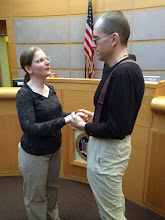
See, here's what y'gotta know about me: sometimes I'm full of crap.
Now some folks who love me will take objection to the above statement because they don't like me beating myself up. I must point out, however, that I say such things with an eye toward recognizing the fallibility of perception. This is a valuable exercise. Some folks don't give it a thought. Others fancy themselves enlightened thinkers because they recognize that different people remember the same event differently; then they fall into the trap of thinking that recognizing human fallibility makes them immune to it. Big mistake. I figure this logical fallacy has seduced most of us at one time or another. With that in mind, I report that my account of the Waghenaer maps in the Armada was rather mangled.
First of all, I used the words "eastern Dutch coast". Jaap pointed out that there is no eastern Dutch coast, and that the Netherlands do have an eastern border - with Germany. It pains me to admit this, but it took me several days and a consultation with Grace to understand this comment. I was picturing the low countries from the perspective of the Armada sweeping along past Calais, Gravelines, Dunkerque, Nieuwport, Oostende, Blankenberge, and the Schelde. Admittedly I had forgotten just how abruptly the coast curves to the north, but the point remains that, in my head, it still seemed perfectly reasonable to refer to the part of the coast that lay furthest to the east as "the eastern Dutch coast". Jaap - and apparently everyone else who doesn't have my brain - thinks that an eastern coast means a coast to the east of the land, and since there ain't no such thing in the Netherlands, then "the eastern Dutch coast" is a misnomer. This goes to show just how easily people can miscommunicate; often I wonder, with a shiver of apprehension, just how many times I've talked at cross-purposes with people and never realized it.
So. On to my error about the Waghenaer editions. After I went back to Howarth's The Voyage of the Armada I found that the Armada did have a complete edition. Here are the relevant bits.
August 7, 1588: The armada is sitting, waiting for Parma to come out, or at least to send local pilots.
August 9: After the Battle of Gravelines, the Armada ships have no anchors and are drifting helplessly along the Flanders coast. Everyone aboard the ships is preparing to die.
In fact, there was a harbour in Parma's control not far away, which could have sheltered the armada, even for the winter: the river Schelde, leading up to Antwerp. The southern side of it and the city of Antwerp were in Parma's hands. The northern side, and the port of Flushing near the mouth, were held by the Dutch. The armada was strong enough to fight its way in past Flushing, and to have a good chance of defending itself off Antwerp; but without the pilots it had not a hope of finding the entrance channel, which is called the Wielingen and extends between immense sandbanks, shallow but invisible, almost twenty miles out to sea.
Some time early that morning the whole of the fleet must have crossed the Wielingen, the entrance to the River Schelde, where there was a clear run downwind to comparative safety. Waghenaer described the way in, but his directions were excessively complicated and they depended (like the entry to Spithead) on seeing landmarks and having the local knowledge to recognize them: 'When Wotkerke is one with Blankenberge and St Catalina shuts into Ostend, you are then before the mouth of the Wielingen: but when the steeple of Ostend is one with St Catherines then you run upon the shallow called Trix, which always turneth about in manner of a whirlpool by reason of the violent meeting of sundry currents and tides...' Nobody in the armada seems to have thought of trying it, except perhaps the remaining Flemish pilot, and he was not in the van where he might conceivably have led the fleet, but was bringing up the rear.
Here's the bit about the gap in the waggoners. The Latin version, which the armada would have carried, was published in 1586. It was the English version that was incomplete in 1588.
Just before the armada sailed, however, there was a great innovation in northern pilotage. This was the first atlas of sea-charts of western and northern Europe. It was published in Holland by Lucas Janszoon Wagenhaer of Enchuysen - for the Dutch at that time were leaders in cartography. The first volume, from Cadiz to the Zuider Zee, appeared in 1584, and the second, of the North Sea and the Baltic, in 1585. A Latin edition of both parts was published in 1586. An English edition, entitled The Mariners Mirrour, was commissioned by Lord Howard in 1586 but was not published until the armada had come and gone, in October of 1588. Wagenhaer's work was an immense success - so much so that all sea charts were called Waggoners by English seamen for at least a century afterwards. In 1588 it was much the best thing of its kind in existence, and there is no doubt the armada pilots had it, either in Dutch or Latin, or perhaps with the relevant parts put into Spanish. The English, on the other hand, did not. But of course they hardly needed it. Most of the time, they were in their own home waters, and they knew the Channel coast by heart.
So. The waggoners were important, but not as important as I remembered. The combination of the ships' helplessness after having cut cables at Gravelines, and the lack of expert navigators for the coast near the Schelde, was much more important.
Here is the lovely image of the 1583 Waghenaer map that I used for the header.

No comments:
Post a Comment